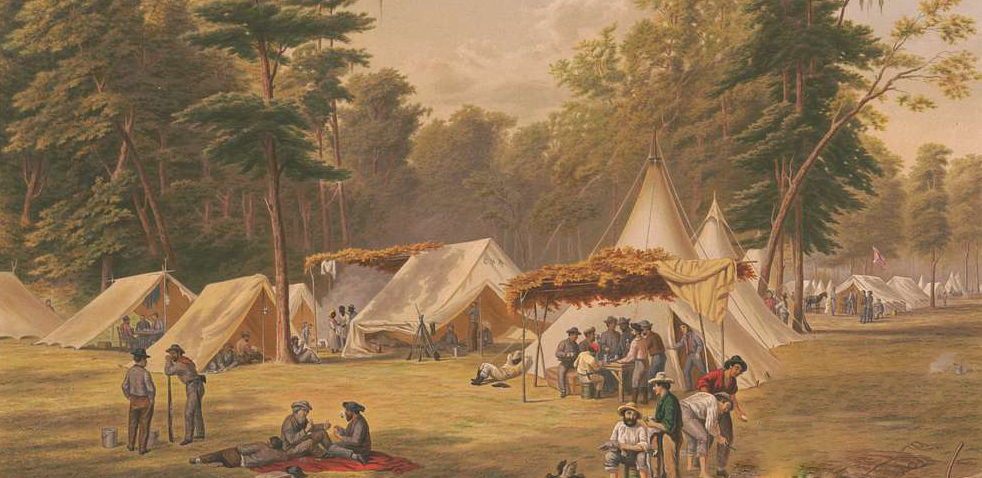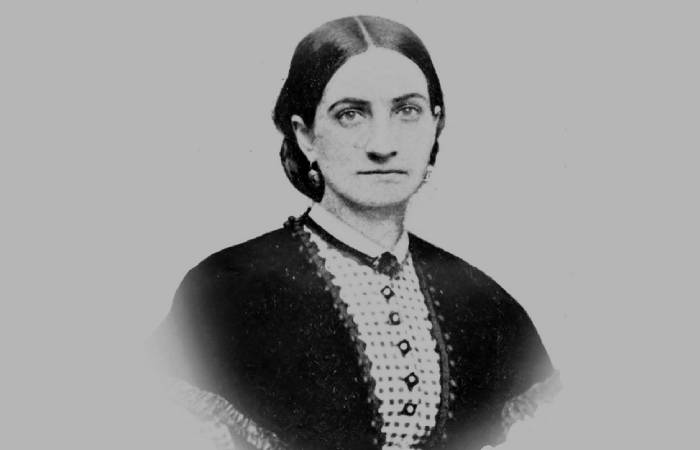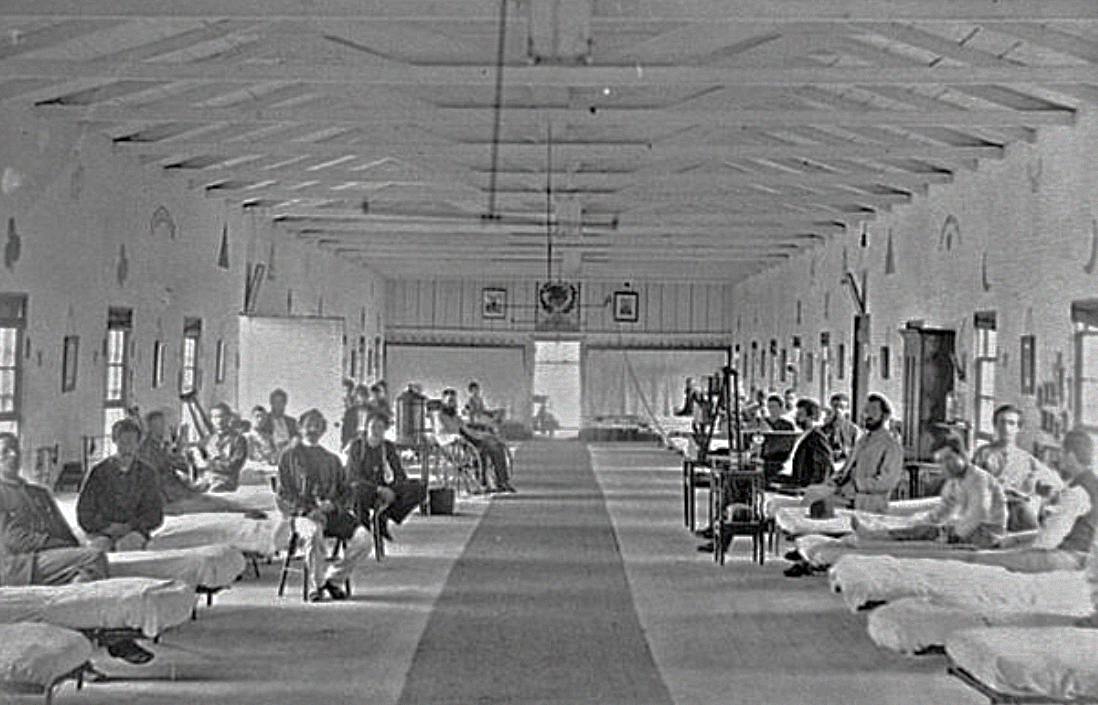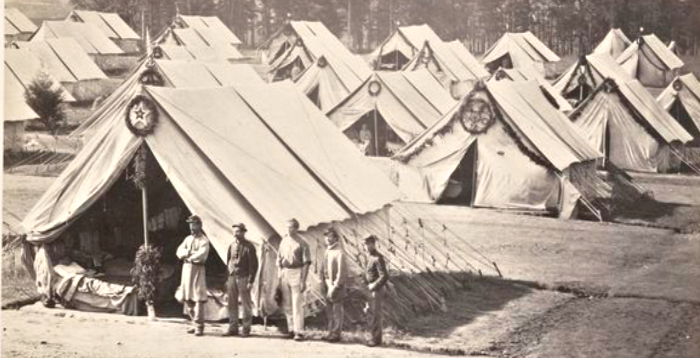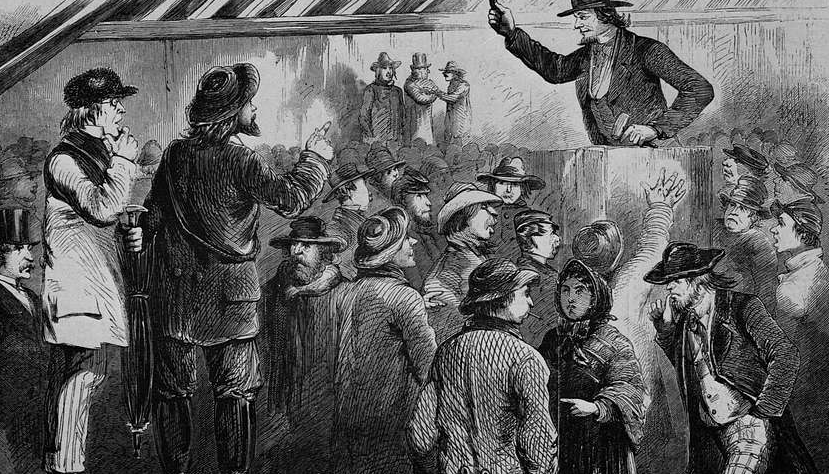A Nation Divided
Although many countries around the world have endured internal strife, the American Civil War of 1861-1865 holds an important place in Western cultural imagination. For both the soldiers who fought and the civilians who watched, the Civil War was a time of great unrest and unease.
The Beginnings Of The Conflict
Primarily a fight over the right to own slaves, the beginnings of the Civil War can be traced to the 1860 election of Abraham Lincoln and the subsequent secession of seven Southern states. Lincoln opposed the expansion of slavery. His opponents “left” the United States and formed the Confederacy.
 Archives New Zealand, CC BY-SA 2.0, Wikimedia Commons
Archives New Zealand, CC BY-SA 2.0, Wikimedia Commons
The First Shot
The war proper began in April 1861, when the Confederacy launched a bombardment on Fort Sumter in South Carolina. The clash spurred patriotism across both the North and the South, and thousands of men enlisted in the Union and Confederate armies.
 Edward Anthony, CC0, Wikimedia Commons
Edward Anthony, CC0, Wikimedia Commons
From Farm To Frontline
The majority of troopers in both armies were not professionals. Many came from civilian lives–as farmers, teachers, or carpenters, for example. As many as 3 million men left their previous lives behind and joined fellow enlistees in the Army camps.
 Edward Anthony, CC0, Wikimedia Commons
Edward Anthony, CC0, Wikimedia Commons
Life In The Camps
Wars, as they say, are not fought by leaders or generals, but by soldiers. The (predominantly) young men who signed up to fight on either side of the conflict endured horrific battles, rampant disease, and utter boredom while fighting for what they thought was right.
A Monotonous Routine
While we primarily hear about the battles in armed conflict, for the most part, there was a lot more waiting than fighting. Servicemen had a routine of rising early, drilling, marching, eating, cleaning armaments, and patrolling their camps. Boredom was a real enemy during the conflict.
 Mathew Benjamin Brady, CC0, Wikimedia Commons
Mathew Benjamin Brady, CC0, Wikimedia Commons
A Boys’ Club
Although some women traveled with the forces, armies were overwhelmingly male. In the camps, many social niceties went out the window and servicemen indulged in gambling, smoking, and drinking to excess.
Armies Of Readers And Writers
Despite the lack of social graces, a large number of enlistees were both readers and writers. Letters home were a way of relieving the boredom between battles, and have left an important historical record of what daily life was like in conflict-era camps.
Soothing Music
Music has always had a calming effect on humans, and it was no different during the civil conflict. Songs about home would remind people what they were fighting for. Dances held in camps also helped relieve boredom.

History's most fascinating stories and darkest secrets, delivered to your inbox daily.
Supply Problems
A huge problem for both sides in the conflict was supplies. Products from opposing sides became highly sought-after, with troopers often engaging in surreptitious trading with their enemies. Confederate fighters wanted Northern coffee, and Union fighters were happy to trade for Southern cigar leaf.
 Civil War Glass Negatives, Wikimedia Commons
Civil War Glass Negatives, Wikimedia Commons
African American Enlistment
One of the major issues being disputed during the civil conflict was the enslavement of African American people in the Southern states. As things ramped up, both free Black men in the North and escaped slaves from the South had a desire to fight for their rights and freedom.
Hesitation About Army Service
Many politicians were concerned about enlisting Black men. Despite fighting against slavery, there were still many bigoted attitudes carried by Union servicemen. However, some commanders, like Thomas Wentworth Higginson, created all-Black divisions, like the First South Carolina Volunteers, the first-ever division of Black troopers.
Helping The Abolition Movement
The eventual acceptance of African American forces into the Union Army was an important early support for the nationwide Abolition movement. Most of the Black men who served in the Army were part of the United States Colored Troops (USCT) division.
 National Parks Gallery, Flickr
National Parks Gallery, Flickr
Fighting Against Discrimination
African American servicemen weren’t just fighting a battle against the Confederate South. Even in the Union armies, Black enlistees were subject to discrimination, often being paid less than their white counterparts, and relegated to menial tasks rather than engaging in battle.
 Alexander Gardner, CC0, Wikimedia Commons
Alexander Gardner, CC0, Wikimedia Commons
Women In The Conflict
While the majority of the battles and decisions of the conflict were made by men, women played a huge part in the battle campaigns. Numerous women, including Sarah Edmonds and Mary and Mollie Bell, disguised themselves as men in order to serve in the armed forces.
 National Gallery of Art, Picryl
National Gallery of Art, Picryl
Franklin Thompson Or Sarah Edmonds?
Franklin Thompson was an exemplary soldier, one who never questioned an order or shirked a duty. Only once the hostilities had ended, after serving with honor and distinction, was it discovered by the government and Thompson’s fellow soldiers that she was actually the Canadian-born woman Sarah Edmonds.
 University of Michigan, Picryl
University of Michigan, Picryl
Soldiers And Spies
Although women only rarely engaged in battle, their place in society was well-suited to spying. Few suspected that women might engage in spycraft, which allowed such figures as Rose O’Neal Greenbow to gather and share sensitive information that helped shift the tides of battle.
 Metropolitan Museum of Art, Picryl
Metropolitan Museum of Art, Picryl
Sacrificing Their Place
For women of high social standing, it was relatively easy to overhear Army secrets and plans. Those who were discovered, like Union spy Elizabeth Van Lew, lost the respect of their communities and often the social standing that helped them in the first place.
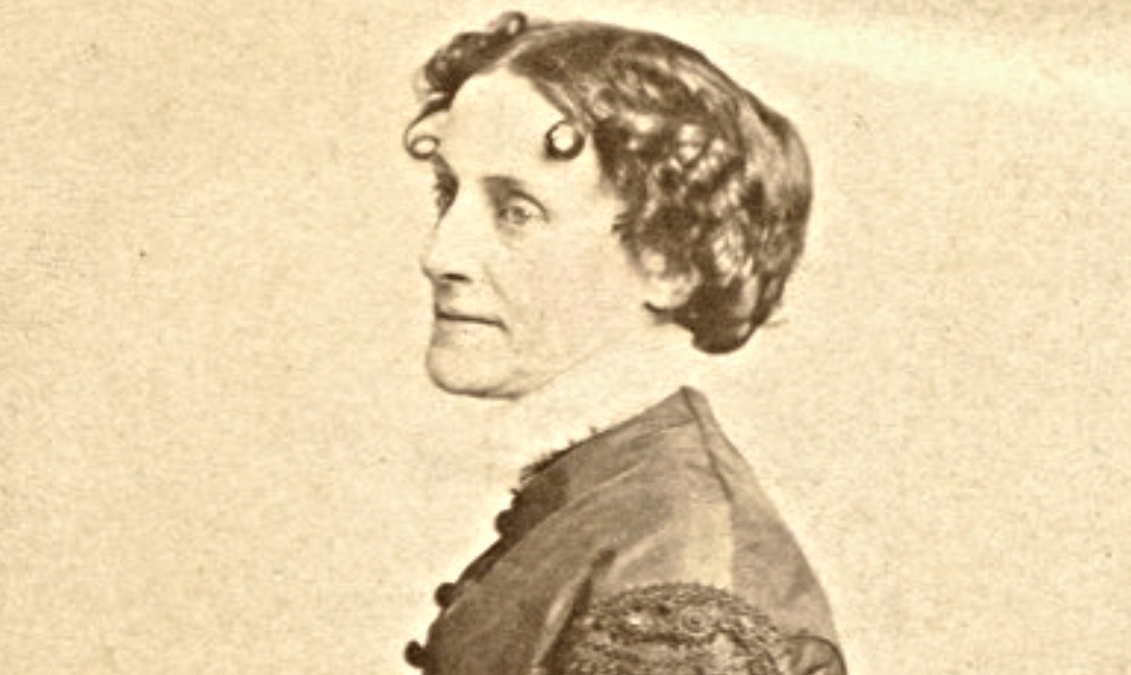 A. J. De Morat, Wikimedia Commons
A. J. De Morat, Wikimedia Commons
Nursing The Wounded
The most common way women assisted with the effort on both sides was as nurses to the many wounded troopers the conflict produced. Witnessing the horrors of the battlefield casualties was often too much for many volunteers.
Hospital Horror
Mary Chesnut, a nurse volunteer, wrote: “I can never shut out of view the sights that I saw there of human misery”. Volunteer Kate Cumming entered service with a number of other women. All but Cumming and one other woman quit within a week of seeing the results of the hostilities.
Advances In Care
Northern hospitals were somewhat more sophisticated than those in the South. Many of the women who worked in these hospitals were members of the United States Sanitary Commission. Dorothea Dix helped the sanitation efforts as the Union’s Superintendent for Army Nurses.
 Library of Congress, Wikimedia Commons
Library of Congress, Wikimedia Commons
Loss Of Life And Limb
If a wound was not fatal, a common practice during the conflict was amputation. After numbing a patient with opium, doctors would remove damaged limbs to prevent dying by bleeding or gangrene. Unfortunately, infection could still take hold and end lives.
Before Germ Theory
Infection of treated wounds was often the result of unsanitary practices. Doctors would use the same tools for multiple amputations, or wear already-soiled surgical gowns, unaware of the dangers these practices posed for their patients.
 Mathew Benjamin Brady, CC0, Wikimedia Commons
Mathew Benjamin Brady, CC0, Wikimedia Commons
The Other Enemy
Given the deplorable state of most of the hospitals in the civil conflict, disease was rampant on both sides. Afflictions like tuberculosis, measles, typhoid, and smallpox accounted for over half of all the casualties attributed to the civil conflict.
Civilians
Not everyone was subject to the frontline horrors of the conflict. Despite this, the hostilities had a huge impact on civilian life and the people who lived miles away from the battlefields. Information about the conflict was spurred on by some new innovations.
The Conflict In The Newspapers
Earlier in the century, the invention of the telegraph and innovations in printing technology made newspapers a far faster and more reliable source of information. Daily and weekly papers were able to keep civilians informed of developments in a way not previously available during this era.
![]() Baker & Godwin, Wikimedia Commons
Baker & Godwin, Wikimedia Commons
Good For Circulation
The patriotism and pride civilians had for their sides in the clash meant that they were eager for news of victories or defeats. Circulation for most papers exploded during the conflict, providing news, political cartoons, and a brand-new innovation: photographs.
The First Battle In Pictures
Despite being a difficult process, photography became an important part of the reporting of the conflict. Mathew Brady hired a team of photographers in an effort to completely document the fight, capturing pictures both on the battlefield and in the camps.
 Library of Congress, Wikimedia Commons
Library of Congress, Wikimedia Commons
Worth A Thousand Words
Displays of Brady’s photos finally brought home to civilians removed from the fighting just how brutal the life of a soldier was. People across America–and around the world–got their first real glimpse of the horror and carnage of battle.
Money Troubles
During the conflict, the Union and the Confederacy each had their own currencies. As the hostilities raged on, Confederate money rapidly devalued, coming close to being worthless by the end of the hostilities.
 Rosser1954, CC BY-SA 4.0, Wikimedia Commons
Rosser1954, CC BY-SA 4.0, Wikimedia Commons
Income Tax Innovation
Meanwhile, the North had little trouble financing the combat effort thanks to the 1861 Internal Revenue Act. This act, among other financial innovations, introduced the very first personal income tax. The Internal Revenue Board began collecting the tax in 1862, and hasn’t stopped yet!
Fractured Families
Like every armed conflict before and since, the American Civil War had an incredibly negative impact on family life. From those displaced by the raging battles to separation by enlistment and, eventually, the grave, American families bore a huge burden during this time.
Working Women
One of the biggest changes for women left behind by men going to battle was having to take a larger role in the running of a business or property. Men had traditionally been the heads of many conflict-era households, and their absence shifted responsibility to the women left behind.
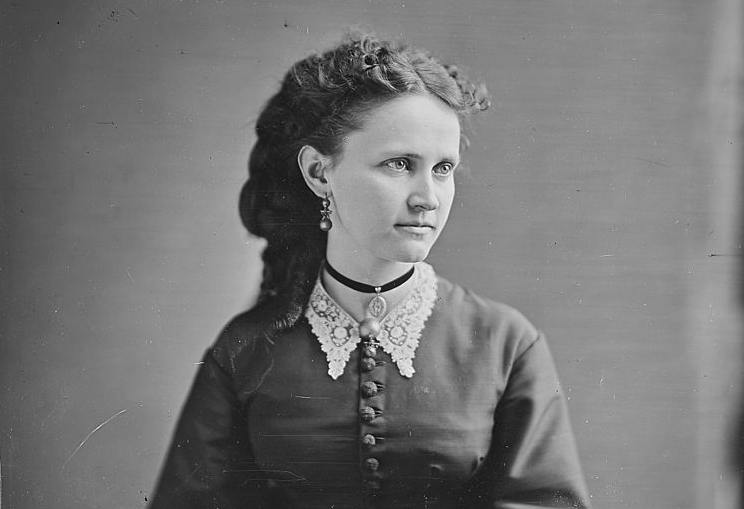 Mathew Benjamin Brady, Wikimedia Commons
Mathew Benjamin Brady, Wikimedia Commons
Showing Their Disdain
In New Orleans, a popular way for women to show their patriotism and disdain was to empty their chamber pots over the heads of Union officers. The result of this was Benjamin Butler’s order that rebellious women be imprisoned.
 TradingCardsNPS, CC BY 2.0, Wikimedia Commons
TradingCardsNPS, CC BY 2.0, Wikimedia Commons
The Role Of The Widow
An unfortunate result of any armed conflict is the creation of widows. Over 200,000 women became widows during the civil conflict, many of them either pregnant or with young children. Widows were expected to wear black and be mournful in public, despite having to deal with family and the running of a household.
Political Division
Still a familiar concern, differences in political opinion about the civil conflict created difficulties in some families. Especially in disputed border states, divisions between Unionist and Confederate beliefs within families sometimes led to lifelong estrangements between family members.
African American Families
For some African American families, the civil conflict worked in the opposite way. Many men who had been sold into slavery escaped or were freed, and some were able to reunite with their families.
Contraband Camps
Makeshift camps appeared on the outskirts of some Army camps, erected by escaped female slaves and their families. These refugee camps–called “Contraband Camps”–became important sites of reunion for many African American families separated by the brutality of slavery in the South.
 National Archives and Records Administration, Picryl
National Archives and Records Administration, Picryl
The Emancipation Proclamation
Perhaps the most important outcome of the civil conflict for African Americans was the 1863 Emancipation Proclamation. This executive order changed the status of millions of Black people throughout the Southern states from enslaved to free. It was the first step on a long road to equality.
Lingering Legacy
One of the reasons the American Civil War continues to be an important and popular topic is that the divisions raised by it, between North and South, endure to a certain extent even today. These divisions show that a conflict that lasted only four years can have an impact for far, far longer than those involved might have thought.
 Tim1965, CC BY-SA 3.0, Wikimedia Commons
Tim1965, CC BY-SA 3.0, Wikimedia Commons


